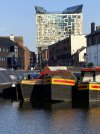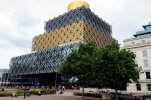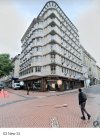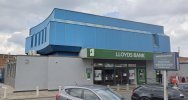Stokkie
master brummie
In the 1950s, 1960s and 1970s many Brutalist buildings were constructed. (Brutalism means simply that they were constructed from reinforced concrete ‘beton brut’ - raw concrete in French.) Some like the Rotunda are loved, some like the Prefabs are rather neglected and some like John Madin's Central Library are demolished. I've noticed a resurgence of interest in modernist buildings as the cityscape of Birmingham changes.
There's a new book:
The Modernist Society is the publisher. I don't expect everyone likes this style of architecture, but the buildings certainly photograph well and some of them like Birmingham University's Muirhead tower have been adapted to contemporary times.
There's a new book:
Birmingham: The Brutiful Years
by Mary Keating, Jenny Marris and John Bell.The Modernist Society is the publisher. I don't expect everyone likes this style of architecture, but the buildings certainly photograph well and some of them like Birmingham University's Muirhead tower have been adapted to contemporary times.
Last edited:






